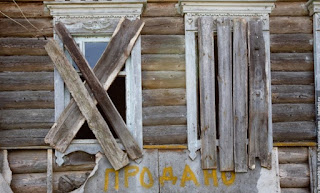
Non-Russians Are Following Ethnic Russians Out of the North Caucasus
By Paul Goble
The flight of ethnic-Russians from the republics of the North Caucasus over the last two decades has not only attracted widespread attention but also generated concern among officials in Moscow (see EDM, November 10, 2011; October 30, 2012; April 22, 2015). Federal authorities view ethnic Russians as guaranteeing Russian control over the other ethnic groups in the North Caucasus and anchoring the non-Russian republics to the Russian Federation. But in the wake of the departure of the ethnic Russians, members of other nationalities are leaving as well, the result of population pressure, conflicts of various kinds, the absence of jobs, and hopes for a better future. And unlike guest workers from Central Asia or the South Caucasus, few of these people have “gone home,” even during the current economic crisis.
The departure of the Russians has been well documented, but that of the non-Russians much less so. In part this is because local officials routinely falsify census returns in order to claim larger populations and thus greater assistance from Moscow. Not only are individuals who live and work elsewhere sometimes still counted as residents of their republics, but various categories of “dead souls” are also added to the census lists. Nonetheless, the flight of non-Russians is beginning to attract more attention as the phenomenon expands in size.
In a Kavkazskaya Politika article, Anton Chablin describes what is happening in the Nogay steppe, on the frontier between Stavropol and Dagestan. Chablin’s article, provocatively titled “The Russians have already left, and the non-Russians are leaving,” examines the situation in one aul (a fortified village in the Caucasus) (Kavpolit.com, September 15). Earlier, he discussed this process in somewhat less dramatic terms for two other locations in that region (Kavpolit.com, October 29, 2014; September 14, 2015).
Twenty years ago, the village (aul) of Novkus-Artesian, which Chablin cites in his recent article, had approximately 3,500 residents, of whom 1,500 were ethnic Russians. Now, half of Novkus-Artesian’s Russians have left; and despite high birthrates among the Nogay and other non-Russian groups, the total population today is less than 2,500. That means that not only ethnic Russians have left but that non-Russians are also leaving in increasing numbers. Assuming Novkus-Artesian is fairly typical, then extrapolating these figures to the North Caucasus as a whole leads to the conclusions that hundreds of thousands of ethnic Russians and an equal or perhaps now even greater number of non-Russians have migrated out of the region.
On the one hand, that means that changes in the ethnic balance caused by the departure of the ethnic Russians may not be as great as many have assumed, given the departures of non-Russians. And on the other hand, it highlights a potentially serious problem for other predominantly ethnic-Russian regions to which non-Russians from the Caucasus are likely to continue to move, especially as non-Russian fertility rates remain high and infant mortality rates across the region fall dramatically, pushing up overall population figures.
According to Lev Kuznetsov, the Russian minister for the North Caucasus, not only are birthrates still high among non-Russians there but infant mortality has been cut by 20 percent. As a result, he suggests, there will soon be even more non-Russian outmigration from the region. He suggests setting up a program to distribute those leaving there across the Russian Federation (Ruskline.ru, September 15).
That is a typical Russian bureaucratic response, but lying behind it is the real fear that non-Russians from the North Caucasus are going to be showing up in more places in Russia and that their arrival will sow the needs of a new round of interethnic conflicts in Russian cities.




